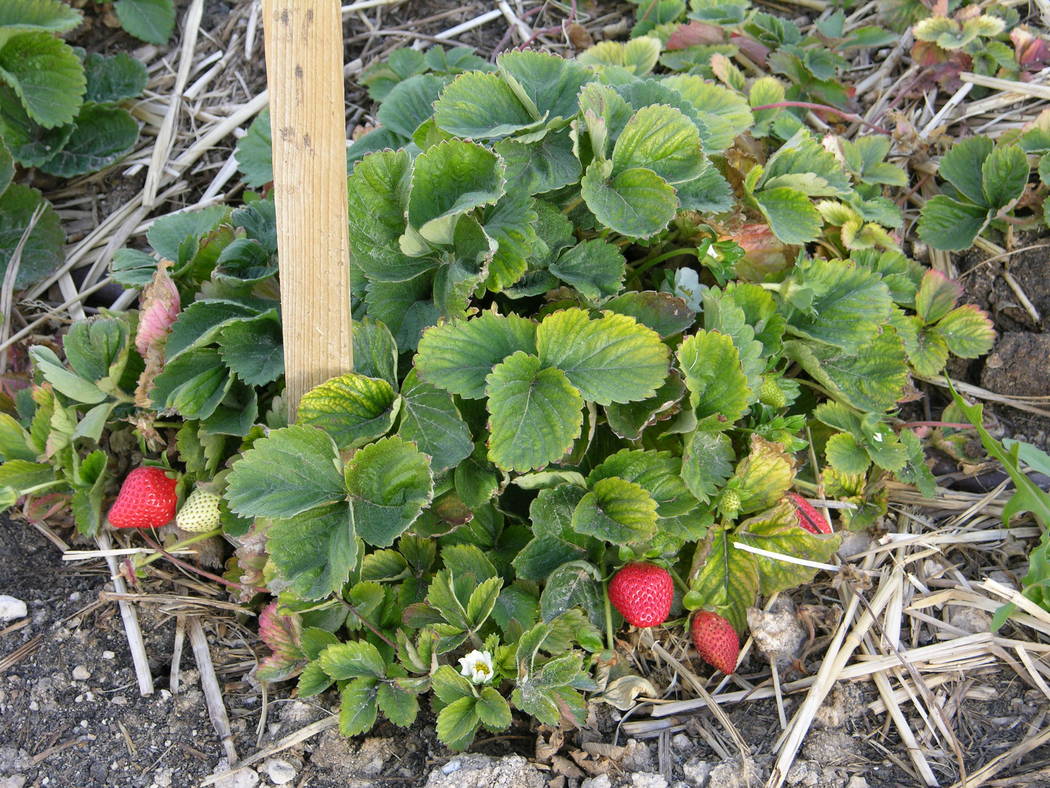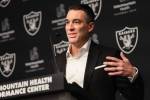Strawberry plants produce best fruit in spring, fall

Q: How well do strawberries grow in our Las Vegas climate? When is the best time to plant and fertilize them? Any other tips?
A: Strawberries will grow and produce fruit in our Las Vegas climate. The best tips I can give are to plant them in the right location, at the right time of year with the right type of soil amendments, aka compost.
They grow best in full morning sun but given some shade during mid- to late afternoons. They need about six to eight hours of sunlight, the same as most vegetables. This means the east side of buildings and walls are best. Do not plant them in areas exposed to late afternoon sun, because they do not handle the heat and intense sunlight well.
Use everbearing types of strawberries that produce through most of the season, rather than the so-called “main crop” strawberries that come on all at once.
The best fruit is produced during the spring and fall months, when it is cooler. Many of the common everbearing types like Quinault, Chandler and Ozark Beauty produce well here.
Plant them anytime in February or March, but don’t wait for temperatures to get hot for planting. The next best time to plant is in the fall if you can find them or get young plants or “runners” from friends and neighbors.
Before planting, make sure the compost content of the soil is adequate, because strawberries prefer rich soils. Soils need compost mixed with it to a depth of 8 to 10 inches. Use a 1- to 2-inch layer of compost mixed into the soil.
Planting depth is critical on strawberries. Make sure the soil drains water easily. Otherwise they will get root rot and die during the heat.
Plant 12 to 18 inches apart. New plants from runners produced later in the season are pegged or secured into the open areas between plants. When a strawberry patch becomes too crowded, the old plants should be removed or the area replanted with young plants. Crowded plants do not produce fruit or flower.
Just like most vegetables, fertilize them lightly and frequently with your favorite tomato or rose fertilizer, about every six to eight weeks. Yes, I said tomato or rose fertilizer, because they need the same nutrients as roses and tomatoes.
When temperatures get warm, cover the soil surface with mulch. Straw is frequently recommended, but I like to use horse bedding rather than straw. Horse bedding is usually made from pine shavings, and they decompose in the soil quickly compared to straw.
Strawberries do very well with drip irrigation and light shade cloth (30 to 40 percent shade) during the summer months.
Q: If I use compost around plants and trees, do I still place wood mulch over the compost? Is it needed or redundant?
A: Regarding fruit trees, wood chips applied 3 to 4 inches deep on the surface of desert soils is always a good idea. It is also a good idea for many traditional landscape plants, such as photinia, mock orange and roses, to have wood mulch or wood chips on top of the soil rather than rock. All these plants are healthiest if rich compost is applied as a fertilizer in the spring.
Under some circumstances, some plants get by without wood chip mulch or compost applied as fertilizer. Trees and shrubs that are truly desert-adapted, or suitable for desert landscapes, can get by without wood chip mulch or compost. All they need is a little bit of fertilizer in early spring every year. These are plants such as mesquite, acacia, Texas ranger and palo verde.
In desert landscapes, with the surface of the soil covered with small rocks suitable for walking, your only alternative may be feeding plants with fertilizers applied from bags, aka mineral fertilizers. These can be applied directly to the surface of the soil near drip emitters and watered in.
Would desert-adapted plants be healthier with compost and wood chip mulch? Definitely. But they can tolerate our desert soils without compost and wood chips better than traditional landscape plants.
Q: I recently read an article online about the dangers of using cement blocks for growing vegetables in raised beds. My compost pile is enclosed by cinder blocks, and I have fruit trees near cinder block property walls. Should I be concerned?
A: Should you be aware of the potential of some toxic chemicals released from decomposing cinder blocks? Yes. But I would not be overly concerned about using cement blocks to surround a compost pile. I would not be overly concerned about using cement blocks to surround a raised bed used for growing vegetables or in close proximity to fruit trees. This is why.
Some internet sites are irritating because they take a topic — in this case, health concerns and gardening — and blow these concerns out of proportion. Contaminated soils near cement plants and growing vegetables in these soils cause concern. But to make the leap from this research to the use of cement blocks in gardening is a stretch.
Many sites on the internet are aimed at making money, and educating the public is a means to an end. I would be very careful about information provided on these sites. They are used primarily for marketing.
The research is very strong regarding the growing of food crops in contaminated soils. Vegetables tend to be relatively safe to eat, provided they are washed before eating and weren’t grown in heavily contaminated soils.
Most food crops tend not to absorb contaminants, and what little they do absorb generally stays in the roots. Some contaminants like zinc will kill plants before they reach concentrations dangerous to people.
Q: How big do you dig your holes for fruit trees?
A: I generally like to dig holes for fruit trees in 5- or 15-gallon containers about 3 feet wide and just deep enough for the root ball from the container. But the size of the hole depends on the condition of the soil for planting.
If the soil is a very poor soil, I make the hole wider but not any deeper unless the soil does not drain water in several hours after filling it. These situations are rare. I don’t like deep holes for plants because of soil settling issues and causing problems later.
Our desert soils can be unusually hard, but in some parts of the Las Vegas Valley, there are caliche layers that are as hard as cement and require a jackhammer to break through them. If you or your neighbors have a pool and this layer was not found when it was put in, then you don’t have a caliche problem.
The soil removed from the hole should be mixed with compost before planting. Use a mixture of one part compost to one part soil. Another option is to use an imported soil mix for planting.
If the compost used in the soil mix is rich, no fertilizer is needed for the first year after planting. If the compost is not rich, then add a starter fertilizer high in phosphorus to the soil mixture before planting. Rich compost is usually made with some sort of animal manure.
Plant the tree the same depth as it was in the container, making sure that the roots are covered with no more than 1 inch of soil.
As this soil mixture is added to the hole, add water to the hole at the same time you add the soil/compost/fertilizer mixture. This slurry of water and soil mixture removes air pockets and results in a tree held solidly in the soil after planting. Small trees will not require staking if done right.
Surround the plants with a donut, and fill this donut with water several times during the next week before you turn it over to the irrigation system.
Bob Morris is a horticulture expert and professor emeritus of the University of Nevada, Las Vegas. Visit his blog at xtremehorticulture.blogspot.com. Send questions to Extremehort@aol.com.



















